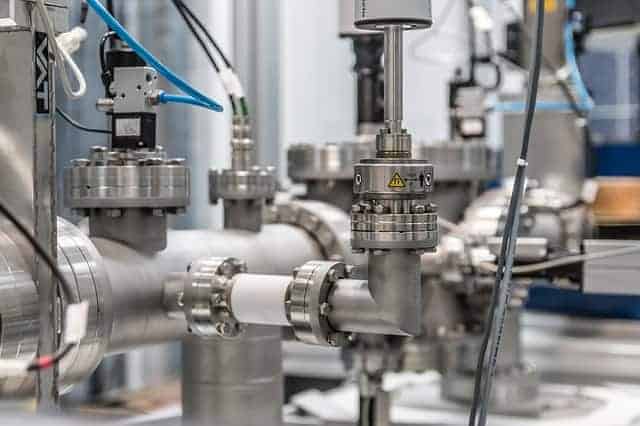Wastewater originates from two main sources: domestic, and industrial use. Regardless of its source, wastewater must be treated to reduce and remove contaminants and lower the risk of harm to humans, animals, and the environment at large.
Wastewater Created by Domestic Use
Blackwater and greywater are types of sewage, or wastewater, created by domestic and natural processes. Blackwater is contaminated with concentrations of raw fecal matter and other organic contaminants, such as uric acid. It is typically created through the use of flushed-water toilets.

Graywater is simply all of the other water that is used domestically. It can become contaminated as a result of direct human activity, such as washing clothes and dishes. Natural processes, such as the runoff from storms, can introduce contaminants like silt and other debris into the domestic water supply.
Domestic wastewater is typically treated with processes that remove solids and other contaminants via impounding and sedimentation. Chemicals such as chlorine are then usually added to kill bacteria and other disease-causing pathogens.
Industrial Wastewater Treatment
Industrial wastewater is divided based on the types of contaminants it contains: organic and inorganic. Like the domestic water supply, industrial wastewater can be affected by natural processes such as runoff and erosion.
Effective treatment of industrial wastewater is very different from the processes used to filter and sanitize domestic wastewater. Industrial wastewater typically needs multiple processes and stages to reduce contamination to levels that are considered safe.
Sometimes, industrial wastewater cannot be rendered safe via treatment. When this occurs, it must be contained to prevent its release into the environment.
Advances in Industrial Wastewater Processing
Industrial wastewater treatments vary widely and are generally dependent upon concentration levels of specific types of contaminants. A moving bed biofilm reactor (MBBR) is one of the newer biological treatment methods that can reduce organic and inorganic contaminants concentrations.
It is viewed as friendly to the environment because it reduces or eliminates coagulation and flocculation treatments. These treatments use chemicals to counteract negatively charged particles and facilitate the removal of solids and clarify the water. It reduces the need for filtration via the sedimentation process, making the treatment process faster.
In addition to reducing contaminants, it removes excess nitrogen, resists clogging, and requires less energy to operate while producing less sludge. MBBR is considered by many to be one of the advances that are revolutionizing water treatment in the commercial sector.
This type of treatment expands capacity at existing wastewater treatment plants and has a long lifespan due to its durable parts that require little maintenance. This is in stark contrast to other biological treatments that rely on carbon-based media that require frequent back-washing and replenishment to remain effective.
Why Effective Industrial Wastewater Treatment Remains Challenging Despite New Tech
Many industries produce organic and inorganic contaminants during their processes, making it harder to treat the wastewater, regardless of which treatment method is used.
For example, selenium removal is complicated because this nutrient occurs in both organic and inorganic forms. Certain industries, such as mining and petrochemicals, commonly produce wastewater that contains both the organic and inorganic forms of selenium.
At specific concentrations, this element causes illness and disease and can lead to death. Wastewater containing unsafe levels of selenium and similar contaminants must be properly treated to preserve life.
It is especially harmful to fish and similar lifeforms that live in ponds, lakes, streams, and other water bodies. For this reason, more natural biological treatment methods, such as the creation of wetlands, can act as a natural buffer and purification system for some forms of wastewater.
The effectiveness of systems that employ chemicals, screens, or sedimentation to treat the water can also be reduced in the face of contamination by elements and other chemicals or compounds that occur simultaneously in organic and inorganic forms. The volume of effluent varies widely.

